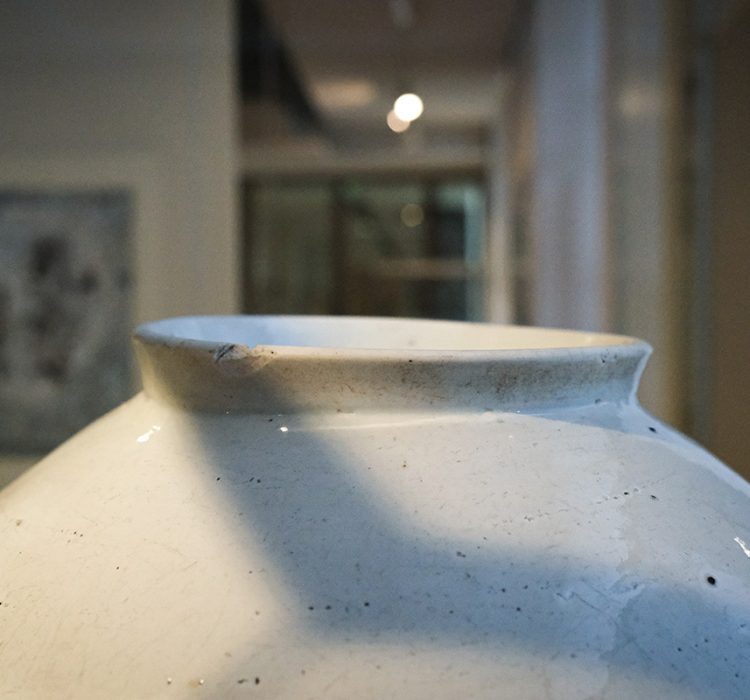
Oct.05
Earlier this year I fell down a moon jar rabbit hole by Gianfranco Chicco
Oct.05
My interest in Korean ceramics had been growing over the years, at first as a way to better understand its Japanese counterpart, and later based on its own merit. While Japanese emperors, aristocrats and rulers like Toyotomi Hideshoshi had a penchant for karamono, elegant and luxurious tea wares and other objects originating in China, it…

Sept.28
Traditions: from copying to rebellion to transcendence by Gianfranco Chicco
Sept.28
When we think about traditional craft objects, the first image that comes to mind is that of old things, vintage looks, nostalgia and remote origin stories. However, traditions are living entities. They have to be born before they get a chance to establish themselves, they grow and evolve, and sometimes they die too. The evolution…

Sept.21
The humble yunomi by Gianfranco Chicco
Sept.21
The yunomi is the workhorse of Japanese teaware. It’s the cup where you’ll be offered tea at a shop, a restaurant, an office or when visiting someone’s home. You’ll find it in daily use by people of all classes and backgrounds. Broadly speaking, Japanese tea cups and bowls can be classified as chawan, yunomi and…

Sept.16
Elizabeth Andoh: A Taste of Culture – Kakashi Guarding the Fields
Sept.16
Farmers around the world deploy “scarecrows” to guard their crops from undesirable flying, crawling, and burrowing creatures. Japan’s kakashi scarecrows that stand guard over rice fields tend to be more whimsical than frightening figures. Above, rice fields in Kanagawa Prefecture, west of Yokohama, with their guardian kakashi taking a brief lunch break, enjoying onigiri rice balls. For nearly a decade I commuted regularly…

Sept.14
Slow prosperity: empathy and (small) business by Gianfranco Chicco
Sept.14
On April 14th 2023 I hosted an online session called “Slow prosperity: Empathy and Business” with 6th generation Japanese master craftsman Takahiro Yagi of Kaikado. Kaikado has been making tea caddies – 茶筒, chazutsu – since 1875. The wide-ranging conversation followed some of the topics covered in Taka’s book, “共感と商い” (“Empathy and Business”), published in March 2023, and…

Sept.07
Tomatoes on Japanese ceramic plates taste better by Gianfranco Chicco
Sept.07
Do tomatoes taste better when eaten from a nice Japanese ceramic plate? Objectively, no. But the experience of serving and eating the tomatoes does improve. That is because human experience is not limited just to the physical characteristics of the food but how we interact with it, from the sensorial stimulation to the meaning we…

Aug.08
Elizabeth Andoh: A Taste of Culture – OBON: Summer Holidays
Aug.08
OBON, the summertime holiday season in Japan, is when the spirits of the departed are believed to return to this world for a short visit. Far from being considered morbid, it is a pleasant, respectful way for younger generations to stay connected to their ancestors. Its a time for fondly recalling the accomplishments and kindnesses…

July.25
Elizabeth Andoh: A Taste of Culture – Tomatoes
July.25
Originating in Mesoamerica about 7,000 years ago, tomatoes arrived in Japan early in the Edo period (1603-1868) having traveled the globe and being domesticated along the way. The painting above by Kanō Tan’yū 狩野探幽 (1602-1674 AD) shows an ornamental variety of tomato that was labelled togaki, 唐柿, literally “Chinese persimmon.” It wasn’t until the Meiji period (1868-1912), though, that tomatoes,…

July.03
The Enduring Charm of Japan’s First Porcelain
July.03
Frequent JLA contributor Alice Gordenker shares her appreciation for a type of Japanese antique porcelain that has captivated people all over the world for more than 400 years. For a comprehensive introduction to Imari ware, and some lovely photographs, please take a look at her new article on the All About Japan website.

June.27
Elizabeth Andoh: A Taste of Culture – ICE is nice!
June.27
The (relatively cool) rainy season has just begun throughout most of Japan, but make no mistake: the oppressive heat and humidity of summer is on its way. The best culinary counterattack on high temperatures and humidity is ICE. Think glacier-like chunks of ice tinkling in glass bowls with swirls of sōmen noodles surrounding them… then imagine mounds…










